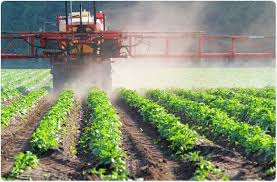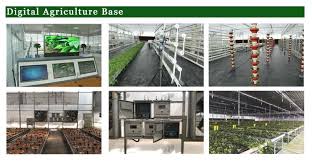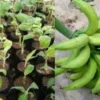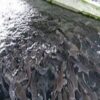Generally, most materials appear homogeneous whereas they are actually a combination of substances. Separation and characterization of the components of these materials allow for adequate analysis, enabling scientists to figure out what the compound is made up of.
Separating these components can be achieved through several methods such as: dissolving them in appropriate liquids, subjecting them to the influence of an electric field, and measuring changes in the state of a material due to heat. Others include x-ray radiography or bioassay for the study of interactions between matter and electromagnetic radiation.
Read Also: Feijoas: History, Nutrition, Health Benefits and Growing Guide
Chromatography in Agricultural Chemical Analysis

Chromatography is an important biophysical technique used by scientists to separate, identify, and purify the components of a mixture or material for qualitative and quantitative analysis. The concept of chromatography was first presented by a Russian botanist named M. S. Tswett in 1903.
Principles of Chromatography For Material Separation
Chromatography is one of the most important analytical techniques. This method is based on the principles of separation of molecular mixtures through their distribution between two phases.
One of these phases is in the form of a porous bed, liquid, layer or film adsorbed on the surface of a solid support and referred to as the stationary phase, while the other is a fluid or gas referred to as the mobile phase that percolates through or over the stable phase.
Separation results from repeated sorption/adsorption circles during the movement of the sample components along the stationary phase as the mobile phase continues to travel through the stable phase.
The result for any chromatographic analysis is thus arrived at from the point at which the different components of the compound stop moving and separate from the other components.
Types of Chromatography Used in Agricultural Research

Although various chromatography methods have been developed to date, only four major types are discussed here: Liquid Chromatography, Gas Chromatography, Thin-layer Chromatography, and Paper Chromatography.
i. Liquid Chromatography: This type is used worldwide to test water for pollution in places like lakes and rivers. It is also used to analyze metal ions and organic compounds in solutions. Liquid chromatography uses liquids that may incorporate hydrophilic insoluble compounds.
ii. Gas Chromatography: Gas chromatography is a simple but highly sensitive and rapidly applied technique for the separation of very minute molecules. The stationary phase in this method is a liquid which is adsorbed onto the surface of an inert solid.
The mobile phase consists of gases such as helium (He) and nitrogen (N₂). This method is used in airports to detect bombs and in forensics to analyze fibres on a person’s body or blood found at a crime scene.
iii. Thin-layer Chromatography: This is a solid/liquid adsorption chromatography. The stationary phase in this method is a solid absorbent substance coated on glass plates. The mobile phase travels upward through the stationary phase. The solvent travels up the thin glass or plastic plates by means of capillary action.
The rate of this upward movement depends on the polarity of the material, the solid phase, and the solvent. It is a simple and rapid method used to check the purity of organic compounds. It is also used to detect pesticide or insecticide residues in food and in forensics to analyze dye composition of fibres.
iv. Paper Chromatography: In this method, a thick filter paper highly saturated with water makes up the stationary liquid phase while the mobile phase consists of an appropriate liquid placed in a developing tank.
Capillary action is used to pull the solvents up through the paper and separate the solutes. Paper chromatography is regarded as a liquid/liquid chromatography. It is a simple and cheap method of chromatography.
Electrophoresis in Biochemical Analysis of Agricultural Samples
Electrophoresis is a separation technique based on the mobility of ions in an electric field. In other words, it is the movement of charged particles in a fluid or gel under the influence of an electric charge.
This is based on the fact that ions have different migration rates depending on their total charge, size, and shape, hence they can be separated. It is used mostly for macromolecules such as proteins. Although widely used, this technique is time-consuming, expensive, and requires skilled personnel.
Types of Electrophoresis and Their Analytical Techniques
Broadly, electrophoresis can be divided into two types: Slab Electrophoresis and Capillary Electrophoresis.
1. Slab Electrophoresis: This is the classical method widely in use. However, it is slow, time-consuming, and bulky. Based on the principles used for separation, slab electrophoresis is further divided into three types: zone electrophoresis, isoelectrofocusing, and immune-electrophoresis.
2. Capillary Electrophoresis: This takes place in a capillary tube and is an advanced method of electrophoresis developed to reduce the time taken for separation and analysis. It usually requires small samples in the range of 0.1 to 10 ɳl compared to the slab electrophoresis method that requires samples in μl.
This method also yields higher speed and high-resolution separations. Separated components that exit from one end of the capillary are immediately analyzed at the other end of the tube by detectors.
Read Also: Pawpaws: History, Nutrition, Health Benefits and Growing Guide
Radioscopy For Non-destructive Agricultural Material Examination

Radioscopy is the examination of objects opaque to light by means of another form of radiation, usually x-rays. It is a non-destructive method of examining an object. Radioscopy provides immediate information regarding nature, size, and location.
It also offers a rapid check of dimensions, configuration, and the presence and positioning of components in a mechanism. Like conventional radiography, radioscopy is applicable to various materials or objects such as metals, stone, ceramics, wood, etc.
Although closely related to the radiographic method, it has a lower operating cost in terms of time, manpower, and material. Long-term records of radioscopic images may be stored as motion-picture or video recordings, or as photographs.
Calorimetry in Heat Analysis of Physical And Chemical Changes
Calorimetry is the field of science that deals with the measurement of the state of a body with respect to heat to examine its physical and chemical changes. The physical changes could include melting, evaporation, etc., while the chemical changes include burning, acid-base neutralization, etc.
Calorimetry is extensively applied in thermochemistry to calculate enthalpy, stability, heat capacity, etc.
Different types of calorimeters used in calorimetry include:
1. Adiabatic Calorimeter – Used to measure changes in temperature without heat loss to the environment.
2. Reaction Calorimeter – Designed to measure the heat evolved or absorbed during a chemical reaction.
3. Bomb Calorimeter – Used for measuring the heat of combustion of a substance.
4. Constant Pressure Calorimeter – Commonly used in chemical laboratories for reactions occurring in solutions.
5. Differential Scanning Calorimeter – Measures how physical properties of a sample change, along with temperature.
Spectrometry For Quantitative Material Analysis in Agriculture
Spectrometry is the method used to acquire a quantitative measurement of the spectrum, that is, a band of colors like in a rainbow, produced by separating components of light based on their different degrees of reflection according to wavelength.
The study of spectrometry dates back to when Isaac Newton first discovered that focusing light through glass splits it into different colors.
The device used for measuring wavelengths of light over a wide range of the electromagnetic spectrum is known as a spectrophotometer. It is commonly used for spectroscopic analysis of materials. Major types of spectrometers include:
1. Optical Spectrometer: Measures the intensity of light absorption and emission over a portion of the electromagnetic spectrum to identify materials. Light deflection is produced by refraction in a prism.
2. Mass Spectrometer: Identifies the amount and type of chemicals present in a sample. It produces charged particles (ions) from the substances to be analyzed and uses electric and magnetic fields to measure the mass of these ions. It is used in various chemical analyses including petroleum products and biological materials.
Although materials mostly appear homogeneous in nature, they are in fact a combination of substances that require separation and characterization for detailed analysis and understanding in both agricultural and scientific research.
Do you have any questions, suggestions, or contributions? If so, please feel free to use the comment box below to share your thoughts. We also encourage you to kindly share this information with others who might benefit from it. Since we can’t reach everyone at once, we truly appreciate your help in spreading the word. Thank you so much for your support and for sharing!






